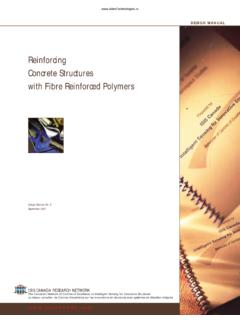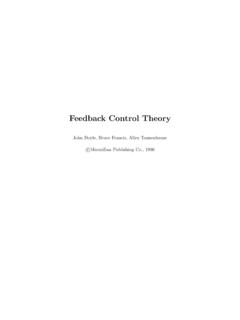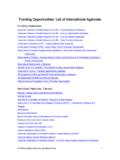Transcription of A New Punching Shear Equation for Two-Way Concrete …
1 877SP-230 50A New Punching Shear Equationfor Two-Way Concrete Slabs Reinforcedwith FRP Barsby S. El-Gamal, El-Salakawy, and B. BenmokraneSynopsis:Synopsis:Synopsis:Syn opsis:Synopsis: Recently, there has been a rapid increase in using the non-corrodible fiber-reinforced polymers (FRP) reinforcing bars as alternative reinforcements for concretestructures especially those in harsh environments. The elastic stiffness, ultimatestrength, and bond characteristics of FRP reinforcing bars are quite different from thoseof steel, which affect the Shear capacity. The recently published FRP design codes andguidelines include equations for Shear design of one-way flexural members. However,very little work was done to investigate the Punching Shear behavior of Two-Way slabsreinforced with FRP bars.
2 The current design provisions for Shear in Two-Way slabs arebased on testing carried out on steel reinforced slabs. This study presents a new modelto predict Shear capacity of Two-Way Concrete slabs that were developed based onextensive experimental work. The accuracy of this prediction model was evaluatedagainst the existing test data. Compared to the available design models, the proposedshear model seems to have very good agreement with test results with betterpredictions for both FRP and steel-reinforced Concrete Two-Way : Concrete slabs; design models; FRP reinforcement; Punching shear878 El-Gamal et El-Gamal is a Candidate in the Department of Civil Engineering at the Universit de Sherbrooke, Canada.
3 He received his BSc and MSc in structural engineering from the Menoufiya University, Egypt. His research interests include large-scale experimental testing and finite element modeling of Concrete structures reinforcedwith steel and FRP composites. ACI member Ehab El-Salakawy is a Research Associate Professor in the Department ofCivil Engineering at the Universit de Sherbrooke, Canada. His research interests includelarge-scale experimental testing and finite element modeling of reinforced Concrete structures, construction, and rehabilitation of Concrete structures reinforced with FRP composites. He has been involved in the design, construction, testing, and monitoring of several FRP-reinforced Concrete bridges in North America.
4 ACI member Brahim Benmokrane is an NSERC Research Chair Professor in FRP Reinforcement for Concrete Structures in the Department of Civil Engineering at theUniversit de Sherbrooke, Sherbrooke, Qu bec, Canada. He is a project leader in ISISC anada Network of Centers of Excellence. His research interests include the application and durability of advanced composite materials in civil engineering structures andstructural health monitoring with fiber optic sensors. He is a member in the CSA(Canadian Standard Association) committees on FRP structural components and FRPreinforcing materials for buildings (S806) and bridges (S6), and ACI committee 440 'FRPR einforcement. INTRODUCTION The long-term durability of reinforced Concrete structures has become a major concern in the construction industry.
5 One of the main factors reducing durability and service life of the reinforced Concrete structures is the corrosion of steel steel-reinforced Concrete structures exposed to de-icing salts and marine environment require extensive and expensive maintenance. Recently, the use of fiber-reinforced polymer (FRP) as alternative reinforcing material in reinforced concretestructures has emerged as innovative solution to the corrosion problem. In addition to thenon-corrosive nature of FRP materials, they also have a high strength-to-weight ratio which makes them attractive as reinforcement for Concrete structures. Extensive research programs have been conducted to investigate the flexural behaviorof Concrete members reinforced with FRP reinforcement.
6 On the other hand, the Shear behavior of Concrete members in general and especially Punching Shear of Two-Way slabs,reinforced with FRP bars has not yet been fully explored. Since early 1960s, muchresearch has been carried out on Punching Shear behavior of slabs reinforced with conventional steel and several design models were proposed (Moe 1961; kinnunen andNylander 1960; Vanderbilt 1972; Hewitt and Batchelor 1975, El-Salakawy et al. 1999 and 2000). However, these models can not be directly applied to FRP-reinforced concreteslabs due to the difference in mechanical properties between FRP and steel reinforcement. The modulus of elasticity for the commercially available glass and aramid FRP bars is 20 to 25 % that of steel compared to 60 to 75 % for carbon FRP bars.
7 FRPRCS-7 879 Due to the relatively low modulus of elasticity of FRP bars, Concrete members reinforced with FRP bars experience reduced Shear strength compared to the shearstrength of those reinforced with the same amounts of steel reinforcement. This results in the development of wider and deeper cracks. Deeper cracks decrease the contribution to Shear strength from the uncracked Concrete due to the lower depth of Concrete incompression. Wider cracks, in turn, decrease the contributions from aggregate interlockand residual tensile stresses. Additionally, due to the relatively small transverse strengthof FRP bars and relatively wider cracks, the contribution of dowel action may benegligible.
8 Punching Shear PROVISIONS FOR FRP-REINFORCED Concrete Two-Way SLABS For steel reinforced Concrete slabs, due to the relatively high modulus of elasticity ofsteel, the dominant factor determining the Concrete Shear resistance will be the area ofconcrete in the compression zone (after cracking), which remains practically unchanged as the depth to the neutral axis does not vary much. This is true when using common steel reinforcement ratios. Therefore, most design codes do not imply the flexuralreinforcement ratio in determining the Punching Shear capacity of steel reinforcedconcrete slabs. However, due to the relatively low modulus of elasticity of FRP, the Concrete Shear strength of FRP-reinforced Concrete slabs becomes more sensitive to the reinforcement stiffness as the depth to neutral axis is reduced significantly after cracking.
9 Thus, it deemed necessary to investigate the behavior and determine the Punching Shear capacity of Concrete slabs reinforced with FRP bars. Current recommendations in the American Concrete Institute Code, ACI 318-05 (2005), and the British Standards, BS 8110-97 (1997), were empirically derived for slabs reinforced with steel reinforcement. There is a lack of design and prediction models related to the Punching Shear strength of Concrete slabs reinforced with FRP composite bars. El-Ghandour et al. (1999) conducted tests on FRP-reinforced Concrete slabs withand without Shear reinforcement. They investigated both the strain and stress approacheswhich used to determine the Punching Shear capacity of FRP reinforced Concrete slabs byconverting the actual FRP reinforced area to an equivalent steel area to be used in equations derived for steel reinforced slabs.
10 They concluded that strain approach represents a lower limit and the stress approach represents an upper limit for Punching capacity. They introduced a modified approach which incorporates both the strain and stress approaches as a modification for the FRP area to equivalent steel area used in the BS-8110 (British Standard Institution 1997) In addition, they conducted experimental tests on FRP-reinforced Concrete flat slabs and compared the ultimate capacity with that predicted by different codes. They alsosuggested a modification to the ACI-318-95 (1995) Equation through multiplying the obtained Shear strength value by the term (EFRP/Esteel)1/3 as follow: 880 El-Gamal et , = (1) where f c is the specified compressive strength of Concrete (MPa), EFRP and Es are the modulus of elasticity of FRP and steel respectively (GPa), bo is the critical perimeter at a distance of d/2 away from the column face (mm), and d is the average flexural depth ofthe slab (mm).










